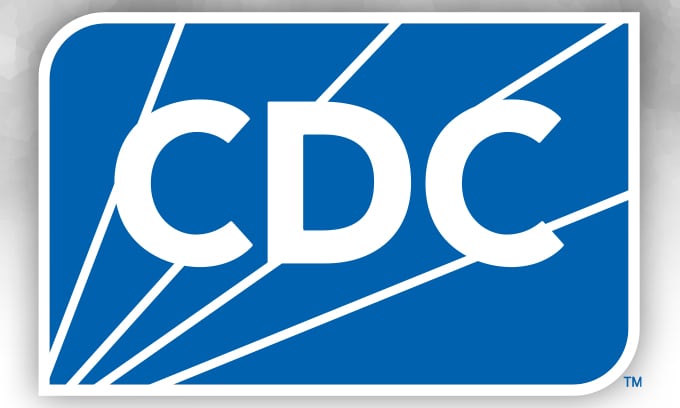Release
Youth Use of Nicotine Pouches Remains Low

Half a million fewer U.S. youth reported current use of e-cigarettes in 2024 compared to 2023, according to new data from the National Youth Tobacco Survey (NYTS) released today by the U.S. Food and Drug Administration and the U.S. Centers for Disease Control and Prevention. The nationally representative data featured in Morbidity and Mortality Weekly Report (MMWR) includes findings on e-cigarette and nicotine pouch use among U.S. youth, two categories of tobacco products the FDA and CDC are monitoring closely, particularly regarding youth use and appeal.
NYTS is an annual school-based, self-administered survey of U.S. middle (grades 6–8) and high school (grades 9–12) students conducted Jan. 22 to May 22, 2024. Findings showed there was a significant drop in the number of U.S. middle and high school students who reported current (past 30 days) e-cigarette use – a decrease from 2.13 million (7.7%) youth in 2023 to 1.63 million (5.9%) youth in 2024. This decline was largely driven by reduced e-cigarette use among high schoolers (1.56 million to 1.21 million), with no statistically significant change in current e-cigarette use among middle school students within the past year. The number of youth who used e-cigarettes in 2024 is approximately one-third of what it was at its peak in 2019, when over five million youth reported current e-cigarette use.
"The continued decline in e-cigarette use among our nation's youth is a monumental public health win," said Brian King, Ph.D., M.P.H., director of the FDA's Center for Tobacco Products. "This progress is a testament to the relentless efforts by the FDA, CDC and others, particularly over the past half decade. But we can't rest on our laurels, as there's still more work to do to further reduce youth e-cigarette use."
Among youth who currently used e-cigarettes, 26.3% reported using e-cigarettes daily. The vast majority of youth who currently used e-cigarettes used flavored products (87.6%), with fruit (62.8%), candy (33.3%) and mint (25.1%) being the top three most commonly used flavors. Disposable e-cigarette products were the most common product type used; however, the most popular brands included both disposable and cartridge-based products. Among youth who currently used e-cigarettes, the most commonly reported brands were Elf Bar (36.1%), Breeze (19.9%), Mr. Fog (15.8%), Vuse (13.7%) and JUUL (12.6%).
Over the past year, a substantive drop occurred in youth reporting use of e-cigarette products under the Elf Bar brand - from 56.7% in 2023 to 36.1% in 2024. Elf Bar is not authorized by the FDA and has been the subject of focused compliance and enforcement actions by the agency since early 2023, including more than 1,000 warning letters and 240 civil money penalties to retailers and others in the supply chain. The FDA has also issued import alerts that include products under the Elf Bar brand, which places them on the "red list" and allows the agency to detain products without conducting a full inspection at the time of entry.
"Youth use of tobacco products in any form—including e-cigarettes and nicotine pouches—is unsafe," said Deirdre Lawrence Kittner, Ph.D., M.P.H., director of CDC's Office on Smoking and Health. "It's essential that we remain vigilant and committed to public health efforts to ensure all youth can live healthy, tobacco-free lives."
Youth nicotine pouch use did not show a statistically significant change from 2023 (1.5% in 2023 and 1.8% in 2024). Of the nearly half a million middle and high school students who reported current nicotine pouch use, 22.4% used them daily. The most commonly reported brands among that group were Zyn (68.7%), on! (14.2%), Rogue (13.6%), Velo (10.7%) and Juice Head ZTN (9.8%). Among those who currently used nicotine pouches, the vast majority used flavored products (85.6%), with mint (53.3%), fruit (22.4%) and menthol (19.3%) being the most commonly used flavors.
"While it's encouraging to see these numbers currently remaining relatively low, the bottom line is that we are concerned about any youth appealing tobacco product," King said. "Our guard is up. We are aware of the reported growing sales trends for nicotine pouches and are closely monitoring the evolving tobacco product landscape for threats to public health, particularly when it comes to kids."
Keeping tobacco products out of the hands of youth remains a top priority for the FDA and CDC. As students head back to school, it is important for educators and parents to talk to teens about tobacco product use. The FDA and CDC have free information and resources available to assist these and other groups. For example, the FDA's Vaping Prevention and Education Resource Center is an online hub with free science-based lesson plans and materials for teachers and parents to promote learning and conversations about youth tobacco product use. The FDA's "The Real Cost" Youth E-Cigarette Prevention campaign also continues to reach approximately 90% of U.S. teens with its effective prevention messages. Additionally, CDC offers a suite of resources to help protect youth from the harms of vaping and other tobacco product use, including its "Empower Vape-Free Youth" campaign for middle and high school educators.
